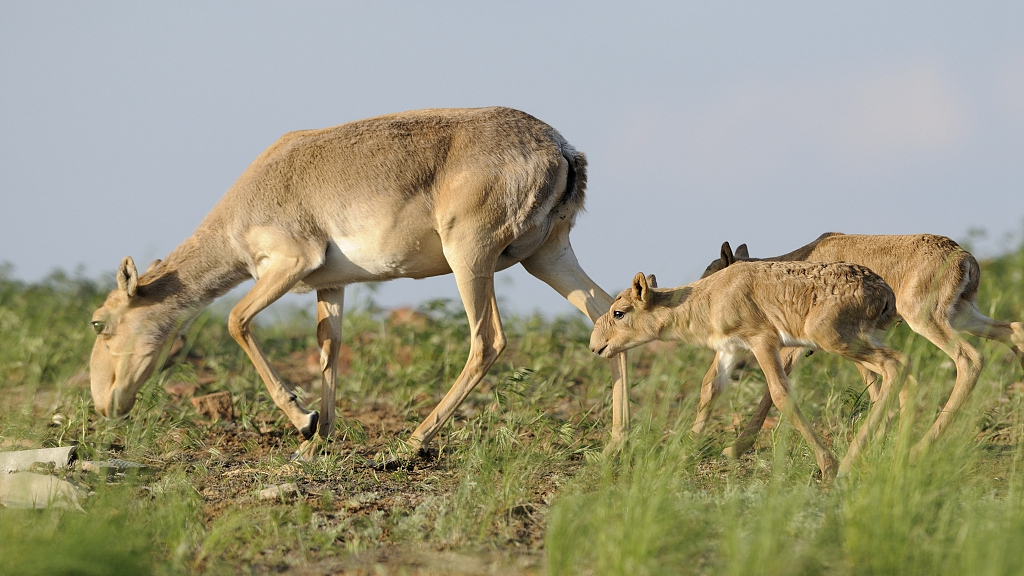

VCG Photo
Governments agreed to regulate the trade of giraffe and saiga antelopes at the 18th Conference of Parties of Convention on International Trade in Endangered Species in Geneva on Friday.
Large populations of both species existed in the wild a few decades back. While a bacterial infection wiped out more than half of the saiga antelope’s population, and giraffe numbers are rapidly declining due to trophy hunting.
The decision to protect giraffes has been taken for the first time at a CITES conference.
“Although this new CITES listing won't ban the trade in giraffe parts, it will for the first time provide critical measures to track and trace this trade,” said Adam Peyman, wildlife programs and operations manager for Humane Society International.
The giraffe population was in abundance in semi-arid Savannah, and the Savannah woodlands of Africa is now restricted to south of the Sahara with 68,000 mature giraffes surviving in the wild. Their number has declined by nearly 40 percent in the last three decades.
With a population of over one million, Saiga antelopes were widespread over Mongolia, Kazakhstan, Uzbekistan, Turkmenistan and the former Soviet Union untill 1970.
Massive die-offs due to changing climatic conditions and extensive use of their body parts for traditional Asian medicines prompted the International Union for Conservation for Nature (IUCN) to declare the animal critically endangered in 2002.
A recent high-profile mortality event in 2015-16 resulted in the deaths of more than 200,000 saigas in Kazakhstan, wiping out two-thirds of the animal’s global population. The Mongolian subspecies was worst affected with only 4,900 of them surviving, a recent estimate said.
Fearing extinction of the animal, Mongolia and the U.S. submitted a proposal to CITES demanding to move the saiga antelope from Appendix II to Appendix I, granting them a higher level of protection.
The governments voted against increasing the protection level of the animal but agreed to stop the international trade of the animal’s horn.
“Today’s vote will end this harmful trade and will support the vital protection for the saiga antelopes at this critical moment,” Said Enkhtuvshin Shiilegdamba, World Conservation Society’s director.

Copyright © 2018 CGTN. Beijing ICP prepared NO.16065310-3
Copyright © 2018 CGTN. Beijing ICP prepared NO.16065310-3